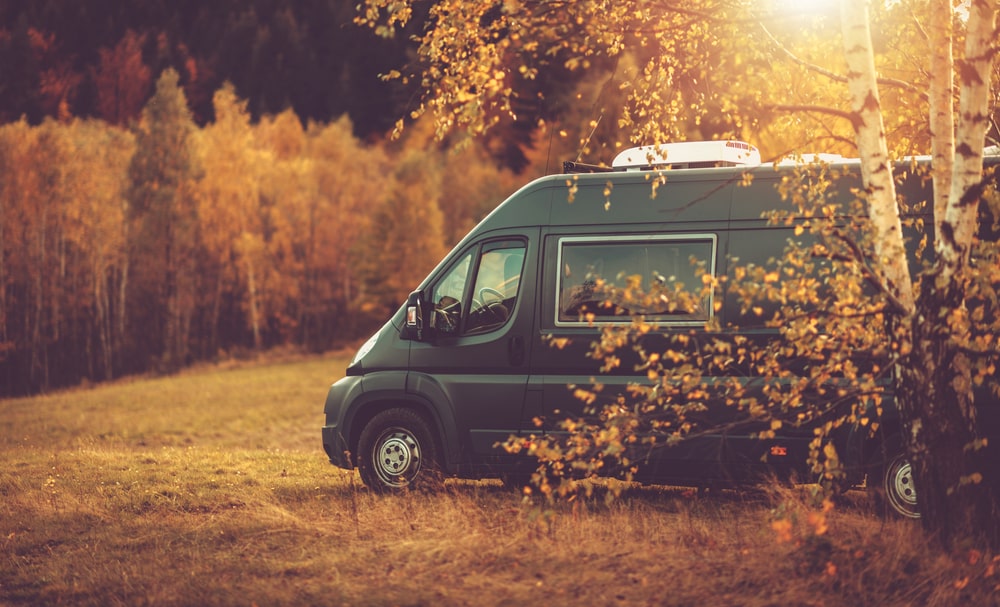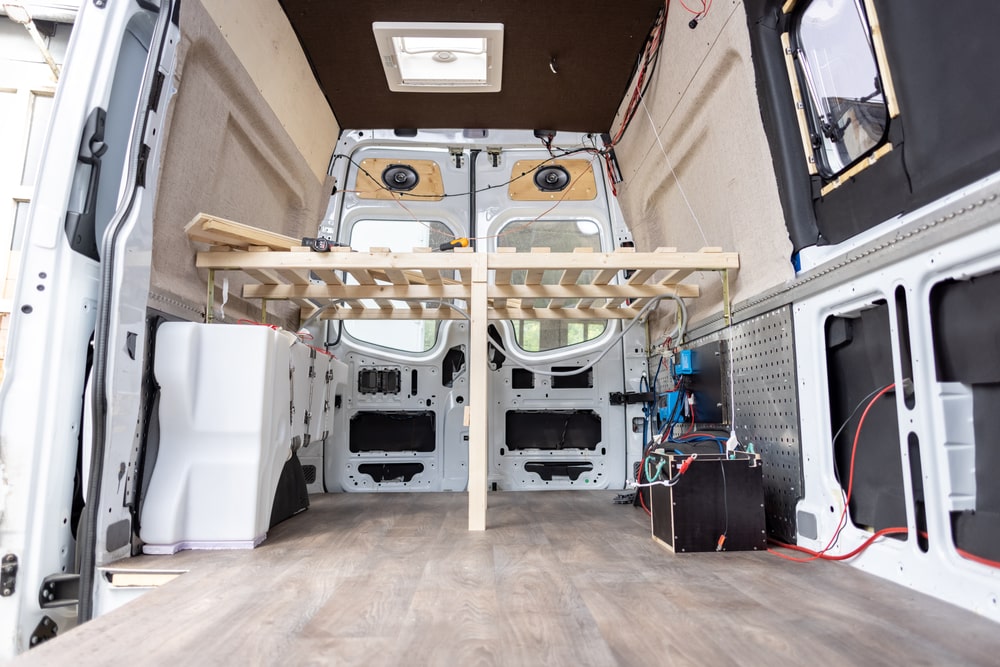Which camper toilet is best?
In addition to eating, drinking and sleeping, one or two visits to the toilet are part of our everyday basic needs in life. However, this can often be difficult on the road if there is no toilet in the camper and no toilet in the area. Especially in more compact motorhomes, in which many things are already stowed, are rarely permanently installed toilets to be found.
In addition, the motto "If necessary in nature" is not always easy to implement or useful even when camping, especially if you are with your camper in the city or in busy places. One possibility is, of course, to always camp near toilets, e.g. at public toilets, at a campsite or at pitches with sanitary facilities, so that you can quickly reach the quiet little toilet in an emergency.
The advantage is that you do not have to worry about disposing of your business. However, such toilets are not always reliable: public toilets can be closed at certain times and some sanitary facilities sometimes simply do not meet the minimum hygienic standards - this can pretty much ruin a trip.
The way out are camping toilets, which you can take with you on your travels and which, with smart solutions and various tips, make it easier for you to go to the quiet little toilet.
In the following article you will learn everything about the different types of toilets, which are suitable for camping and your camper.

Regardless of which camping toilet you choose, there are some criteria to consider when buying:
The size of the camping toilet
When choosing the right toilet for your camper, it is important to think through whether the toilet will be in one place most of the time or whether it will need to be moved from one place to another for use. If the toilet will remain permanently in one place, it makes sense to opt for a larger, heavier model. Otherwise, a compact toilet is more suitable, as it is easier to transport.
The size of the waste water tank
The frequency of emptying depends on the size of the waste water tank of your camping toilet. It should be noted that small tanks are easier to clean, but also need to be emptied more frequently.
The weight
The camping toilet must not be too heavy, especially if you are traveling with small vehicles. It is recommended for your camping toilet an empty weight between 1 to 4 kilograms. At the same time, the weight of your toilet also depends greatly on the model. Dry toilets, for example, are often smaller and lighter because they do not contain chemical liquids.
A level indicator
A fill level indicator is particularly practical, as it allows you to read whether it will soon be time to empty the tank or clean the toilet again.
A flushing system
A flushing system flushes the feces with fresh water in a wastewater tank. This is particularly practical, as the escape of odors can be prevented. However, such camping toilets have a high water consumption and the waste water can only be disposed of inconveniently. You must also always make sure that you have enough fresh water in the tank.

What types of camping toilets are there?
The different types of camping toilets can be roughly divided into two categories: Chemical toilet and dry toilet. Chemical toilets contain chemical additives or sanitary liquids. A dry toilet, on the other hand, does not use any liquids, such as water or chemicals. The most popular camping toilets are:
-
cassette toilets
-
Mobile/portable camping toilets
-
dry toilets
-
macerator toilets
-
dry composting toilet
-
incineration toilet
Which loo you ultimately choose depends on how you camp. How big is your caravan or camper? Where can you transport your toilet and what price are you willing to pay for the initial cost?
What is certain is that the range for camping toilets is very large and that each form of camping toilet brings its advantages, but also its disadvantages.

Cassette toilets
Cassette toilets are one of the most popular types of camping toilets. This is partly because they promise great convenience:
Depending on the model, there are types with fresh and flush water tank. Other models are connected only to the fresh water tank for flushing. To dispose of the business, the feces are collected in a special holding tank. This holding tank can then be removed like a cassette and emptied at a disposal station. Disposal stations can be found, for example, at campsites above the pouring spout - where campers can empty their cassettes and often also clean them.
In addition, this form of camping toilet is especially practical because it can be maintained from the outside and usually has a level indicator in the camper, which indicates when the waste tank must be emptied.
Cassette toilets usually require chemical additives or biodegradable alternatives. The flush works either with an electric pump or mechanically and is optimally integrated into the water supply of the camper
Advantages:
-
Usually already installed in the mobile home
-
Effectively prevents odors
-
Easy to use, dispose of and clean
Disadvantages:
-
Less flexible than mobile variants
-
In comparison, more expensive than mobile chemical toilets
-
Not easy to integrate into DIY conversions
Mobile camping toilets
Most mobile camping toilets are chemical toilets and especially practical if you have little space in your campervan. Mobile camping toilets are completely self-sufficient, portable and usually consist of a few parts: The seat, a fresh water tank and the holding tank. In the holding tank, the feces are decomposed by a chemical sanitation fluid, which should also reduce unpleasant odors here. The operation usually runs on a hand pump, which allows independence from a power supply.
Advantages:
-
Suitable for small vehicles
-
Must only be used when really needed
-
Cheaper than built-in cassette toilets
-
Can also be operated without electricity
Disadvantages:
-
Requires a lot of chemistry
-
Impact on the environment (because of the chemicals used)
-
Disposal is only possible in the designated areas
-
Significantly more expensive to use than dry toilets
Dry toilet / composting toilet
A compost or dry toilet also works without chemical liquids and is therefore the most sustainable solution. In addition, a dry toilet has the advantage that no additional sanitary liquids need to be loaded into the camper.
With a dry toilet, all fecal matter falls into a container under the toilet seat, similar to an outhouse. Natural materials, such as wood chips, bark mulch or, at best, hemp litter, are placed on top of this to allow the liquids to be drawn up and fecal matter to decompose. The containers with the feces can later simply be disposed of in a bio garbage can or in an ordinary residual waste garbage can, but not in nature.
Thus, they are much cheaper to maintain than conventional chemical toilets. With the BOXIO - TOILET there is now also a composting toilet, which is hardly more expensive also in the acquisition than a classical chemistry toilet. Thus, the composting toilet is not only for the environment, but also for the Vanlife the best camper toilet.

Since a dry toilet works without water, no additional pump or electricity is needed, but also no water and no additional chemicals.
The dry composting toilet belongs to the category of dry toilets. The special thing about a composting toilet is that your solid and liquid excreta are collected by different containers. This has the advantage that there is very little odor, as it only starts when urine and feces react with each other and the decomposition process begins.
A special separating insert below the toilet seat is responsible for separating your excrement in the composting toilet. This allows feces and urine to be collected and stored independently of each other. The urine is directed into a canister, while the feces end up in a bucket.
Thus, the disposal of both excreta can also take place separately. The urine can be dumped from the canister into a (public) toilet, while the feces can be collected in a plastic bag made of synthetic material and disposed of well-sealed in the residual waste. Here, a compostable bag should not be used, as it could dissolve over time.
A useful addition, especially for a urine canister composting toilet, is the spill guard. The spill protection becomes particularly important on uneven roads, where there is an increased risk of the canister spilling. Even though it would theoretically be possible to screw a lid onto the urine canister while driving, in reality it is often the case that people forget to do so. This is where a leakage protector provides a remedy, which can be purchased inexpensively from many suppliers.
Advantages:
-
Hardly more expensive than chemical toilets
-
Requires no water and no chemicals
-
Environmentally friendly and sustainable
-
Compact and can also be used as a seat
-
Easy disposal possible anywhere
-
Can make compost
-
With hemp litter and odor trap, the contents can be stored for several days without unpleasant odors forming
Disadvantages:
-
Disposal can be a bit uncomfortable at first
-
Composting can take quite a long time (up to 2 years)

The chopper toilet
Chopper toilet is a model that chops your excrement and discarded toilet paper with the help of blades. Then the feces end up in the holding tank. Disposing of the contents from the tank is done through a hose. The tanks of the toilets are often larger than those of other models, which means that you have to empty them at longer intervals, but they also take up more space.
It should be noted that the chopper toilet does not require chemical sanitary additives, but it does require a power connection, as well as a water connection. Water consumption is relatively high in chopper toilets (1-2 liters per flush).
Advantages:
-
Leash chemistry
-
Easy disposal
-
Tank and toilet bowl can be installed separately in the mobile home
Disadvantages:
-
High water consumption
-
Power connection required
-
High weight
incineration toilet
Combustion toilets are toilets permanently installed in the motorhome, which burn your feces without residue. This offers you, on the one hand, the comfort on the quiet little toilet, because no holding tanks must be emptied and any other contact with your excreta is avoided.
On the other hand, such toilets are quite resource-intensive and expensive. Even if no water is needed, a large gas tank and an exhaust pipe are required for combustion. In addition, the toilet can weigh up to 20 kg, which makes it rather unsuitable for vehicles with weak engines. Approximately 100 grams of gas are consumed per toilet use. Thus, the investment in a combustion toilet consists of the cost of the actual toilet, the installation of the toilet, and the ongoing gas costs.
Advantages:
-
Great convenience because you don't have to dispose of anything
-
No smell of feces
-
No water consumption
Disadvantages:
-
High purchase prices
-
Professional installation required
-
The models are heavy
-
A gas tank is required

What should be considered when using camping toilets with sanitary liquid?

Sanitary liquids are chemical liquids that help in the decomposition of feces and toilet paper. The advantage of camping toilets with sanitary liquid is that they often look similar to the toilet in the bathroom at home, so you do not have to get used to much. With the help of a (usually hand-operated) flush, your feces are transported into a holding tank. The holding tank then contains the sanitary liquid, which contributes to the decomposition process and prevents unpleasant odors. However, you should note that the sanitary liquid itself has an odor that often smells like chemicals.
If you use a camping toilet with a holding tank, you should empty the tank every 2 to 3 days in an appropriate place, despite the sanitary liquid. Also, pay attention to the level indicator to know if it is not necessary to empty the tank earlier to prevent overflow from the toilet.
When buying from the holding tank, make sure that it can be closed with a built-in slide valve. This will make emptying easier for you and make it a much cleaner process.
In addition, it is recommended that you do not choose a waste tank that is too large, as you will still need to move and transport it from your RV to the dump station when emptying it. The same applies to the fresh water tank, which after filling, must be carried back into the camper.
What alternatives are there to chemistry?
There are many camping toilets, which can be used without the use of chemicals and work well. Examples are the dry toilet or a composting toilet. The advantage is that these toilets are more sustainable and pollute the environment less when camping.
Those who are concerned about odors in the camper with dry toilets can use natural alternatives to sanitary liquids, such as bark mulch, which is poured over the excreta after each gag on the toilet. Bedding absorbs residual moisture, minimizes residual odors and, depending on the material, promotes composting of the droppings.

Especially for toilets used without sanitary liquid, it is important to pay attention to hygiene and to empty and clean the toilet regularly. You should always wear gloves when doing this.
Another aspect that should be taken into account when not using sanitary liquid is that they should use especially thin toilet paper, because it decomposes faster.
Also on the subject of toilet paper, you can adjust their products depending on the toilet. In fact, when it comes to toilet paper, there are a wide variety of items. Quickly degradable toilet paper is particularly popular with campers. There are also more sustainable solutions, such as unpackaged toilet paper or recycled toilet paper. Nevertheless, make sure that you never leave toilet paper in nature.

No electricity - now what?
If you do not have electricity in your campervan, this is not a problem. Most chemical toilets and dry toilets do not require their own power connection for use. Even flush toilets often operate without a power connection, but via a manual or electric drive.
Chopper toilets, on the other hand, require a 12-volt power connection to function.
So when deciding on the right camping toilet, pay attention to the conditions of your vehicle.

How do you dispose of the holding tank?
If the waste tank of your camping toilet is full, you should empty it appropriately as soon as possible. This should take place at so-called disposal stations, which offer most campsites and sites for motorhomes. Disposal stations, are special facilities, which are either directly connected to the sewer system or emptied regularly. Here you should note that you must not dispose of holding tanks or cassettes, which contain environmentally unfriendly chemicals.
Before actually disposing of them, make sure that the slide valve that closes the holding tank is tightly closed. After emptying from the toilet, the tank must be properly rinsed with water and a chemical additive (as specified by the manufacturer) before everything may be reinstalled in the camper.

A different procedure applies to a dry toilet. Disposing of the contents of a dry toilet does not necessarily require a disposal station, as no sanitary liquid is used in a dry toilet. Thus, when traveling, the excreta can also be disposed of in the nearest trash can, well sealed in a plastic bag, or in the home garden as compost.
If a plastic bag is used to dispose of the feces in the residual waste, it is recommended to use a plastic bag made of recycled plastic, certified with the Blue Angel, as these are somewhat more resource efficient. Compostable bags are not recommended, as they could slowly decompose in the residual waste garbage can, and because if they are disposed of in the residual waste, they will be incinerated and not composted.
The main thing is not to dispose of your feces in nature, such as in the forest or under the nearest bush, or on other people's property. This is not only forbidden but also very harmful to the environment. Inappropriately disposed excreta severely pollute nature and can pollute surrounding waters.

Cleaning your camping toilet
Regardless of which camping toilet you choose, the most important thing is to clean your camping toilets regularly and keep them in a well-maintained condition. Among other tips, it makes sense to avoid aggressive chemicals, as they attack the surface of your camping toilet, causing it to wear out faster. The best way to clean a camping toilet is to use a sponge with warm water. Cleaning should take place at least twice a week.





